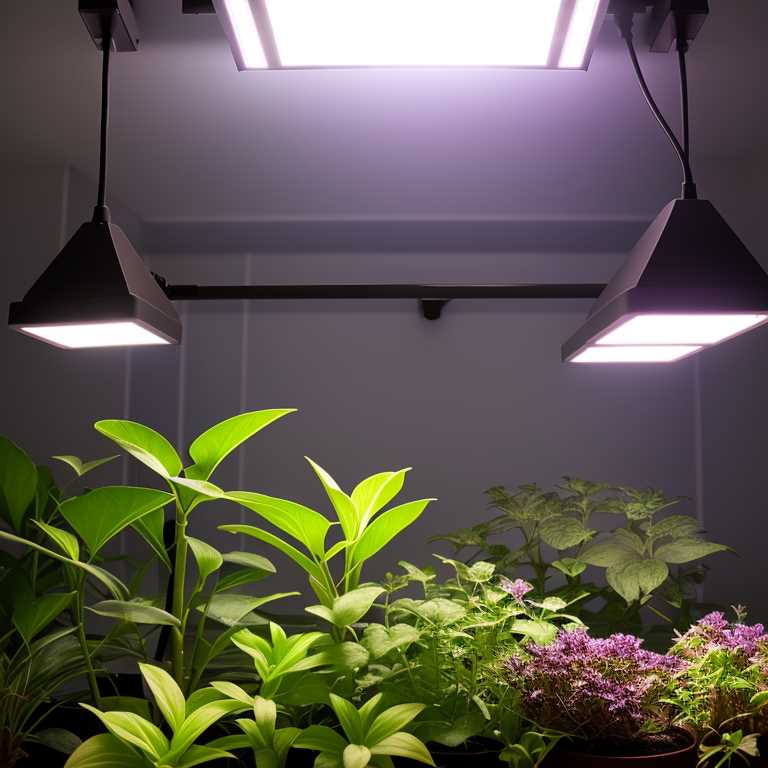How many solar panels to run grow light

When it comes to growing plants indoors, grow lights are an essential component. However, powering these lights can be a challenge, especially if you are looking to reduce your carbon footprint and save on energy costs. Solar panels are a great solution for powering indoor grow lights, but how many solar panels do you need? In this article, we will explore the factors that determine how many solar panels you need to run grow lights.
The first factor that determines the number of solar panels needed to run grow lights is the power consumption of the lights. Grow lights come in different wattages, and the higher the wattage, the more power it consumes. For example, a 600-watt grow light will require more power than a 300-watt grow light. To determine the power consumption of your grow lights, you can check the manufacturer's specifications or use a power meter.
Once you know the power consumption of your grow lights, you can use it to determine the number of solar panels needed. Solar panels are rated in watts, and the amount of power they can generate depends on their size and efficiency. A typical solar panel can generate around 300 watts of power, but this can vary depending on the brand and model. To calculate the number of solar panels needed, you will need to divide the power consumption of your grow lights by the wattage of the solar panel.
For example, if you have a 600-watt grow light and a solar panel that generates 300 watts of power, you will need two solar panels to power the grow light. However, this calculation does not take into account other factors that can affect the performance of the solar panels.
The second factor that affects the number of solar panels needed is the location of the grow room. The amount of sunlight that reaches the solar panels depends on the location, orientation, and angle of the solar panels. If the grow room is located in an area with low sunlight, you may need more solar panels to compensate for the lower power output.
The orientation and angle of the solar panels are also important factors to consider. Solar panels work best when they are facing south and are tilted at an angle that is equal to the latitude of the location. For example, if you are located at 30 degrees latitude, the optimal angle for the solar panels would be 30 degrees. If the solar panels are not facing south or are tilted at a different angle, their power output may be reduced, and you may need more solar panels to compensate.
The third factor that affects the number of solar panels needed is the battery capacity. Solar panels generate power only when the sun is shining, and the power generated varies throughout the day. To ensure that your grow lights have a constant and reliable source of power, you will need to store the excess power generated by the solar panels in batteries. The size and capacity of the batteries will depend on the power consumption of the grow lights and the number of solar panels.
Ideally, you should have enough battery capacity to power the grow lights for at least 12 hours, even on cloudy days. This means that you will need to calculate the total power consumption of the grow lights for the entire period and choose batteries that can store that amount of power.
In addition to these factors, there are other considerations that can affect the performance and efficiency of the solar panels. These include the temperature, humidity, and ventilation of the grow room, the quality of the wiring and connections, and the efficiency of the inverter that converts the DC power generated by the solar panels into AC power that can be used by the grow lights.
The number of solar panels needed to run grow lights depends on several factors, including the power consumption of the grow lights, the location and orientation of the solar panels, and the battery capacity. To calculate the number of solar panels needed, you will need to divide the power consumption of the grow lights by the wattage of the solar panel. However, it is important to consider other factors that can affect the performance and efficiency of the solar panels, such as the location, temperature, humidity, and ventilation of the grow room, as well as the quality of the wiring, connections, and inverter. By taking these factors into account, you can ensure that your solar-powered grow lights provide a constant, reliable source of power for your indoor plants.